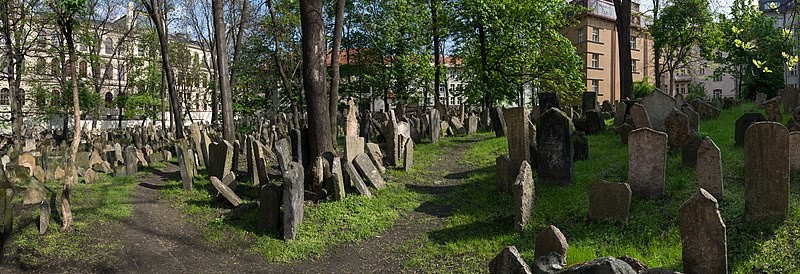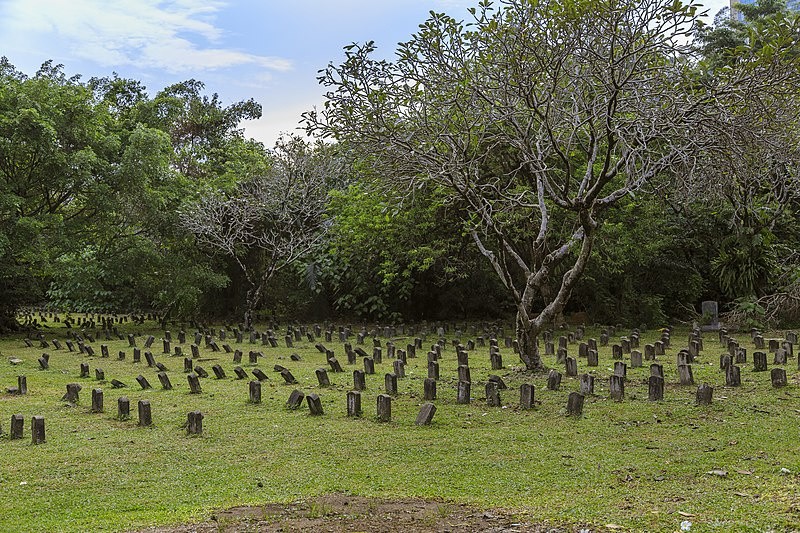As the COVID death toll exceeded the dreadful barrier of over 900,000 on February 4, the Omicron surge has launched a devastatingly fast-paced flood of fatalities across the United States.
In Brazil and India, the number of deaths has surged by 167 percent and 136 percent, respectively, in the previous two weeks.
Over 5.7 million people have died due to the global coronavirus epidemic. Funeral houses, mass burial grounds, and crematoriums are overcrowded and overburdened. In a frantic attempt to bury thousands of daily COVID, gravediggers in So Paulo had to exhume ancient graves in a cemetery and transfer corpses' bones in April.

Overcrowded Cemeteries
Cemeteries, according to researchers, are one of the most overlooked and pervasive sources of metal pollution on the earth. Metal pollution in graves and nearby regions might reach alarming levels as the COVID epidemic progresses, escalating the danger of groundwater contamination.
When a body decomposes, it releases several liters of water and a broad spectrum of heavy metals in the form of graveyard leachate, a brownish-gray liquid.
Water makes up to 60% of the leachate in cemeteries. Mineral salts account for another 30 to 40% of the total. Organic chemicals and different naturally occurring metallic compounds such as calcium, chromium, iron, manganese, and lead make up the remaining 10%.
Before cemetery leachate begins to trickle into the earth, it can take up to three years for a buried body to produce it.
Pollutants
During the COVID-19 epidemic, Leticia Rocha Goncalves, a scientist at So Paulo State University in Brazil, looked into the makeup of cemetery leachate and how it may be a significant pollutant.
She discovered that the dramatic increase of COVID fatalities has resulted in urban cemeteries being yet another severe hazard to the environment and health of local populations after studying data from numerous scientific journals, government publications, and international environmental organizations. Environmental Science and Pollution Research published her findings.
"People need to be aware of the possible environmental impact since the demand for graves is much higher during the COVID epidemic," she tells Popular Science. "To address this issue, we must rapidly develop health policies."
Decomposition
Embalmed corpses, according to Goncalves, are one of the most common causes of metal pollution in cemeteries. Cemeteries employ formaldehyde, potassium nitrate, and chrome paint in the embalming process. Metals, such as arsenic, get mixed with graveyard leachate and soak deep into the earth when an embalmed body decomposes. Orthopedic implants, dental fillings, and pacemakers are examples of medical equipment that may have a role.
According to WHO, the problem with the bodies isn't the only one. Metals and woods that have been varnished emit zinc, aluminum, and copper, which can corrode and leak into soils through graveyard leachate, which comprises various types of steel and wood.
The deposition, transfer, and corrosion of metals in the soil of cemeteries are influenced by several factors, including a region's climate, precipitation patterns, and daily temperatures. Metal contaminants are more likely to be found in soil in cemeteries located in areas with average high temperatures and rains.
Sustainability

According to research published last year in the journal Environment, Development, and Sustainability, neighborhoods within a 500-meter radius of cemeteries are at an increased risk of heavy metal exposure.
"However, we can't blame cemeteries," says Alcindo Neckel, a Brazilian environmental engineer and professor at IMED's School of Architecture and Urbanism.
Existing cemeteries were constructed at a safe distance from residential areas worldwide. On the other hand, rapid urbanization has led to the rise of dense residential neighborhoods, which are becoming nearer to cemeteries.
Researchers have seen that as a result, a growing number of populations in a variety of cities throughout the world have become more sensitive to the pollution and health concerns that come with it. Before COVID-19, cities like Ho Chi Minh, Vietnam, and Tshwane, South Africa, were suffering the effects.
For many months, Neckel and his team evaluated 180 soil samples from three cemeteries in Carazinho, southern Brazil. In the soil samples, they discovered significant amounts of chromium and lead. "The allowed limit of metal toxicity in the soil is 70%," he explains. "Before the pandemic, we discovered that chromium and lead levels were above 110 percent."
For similar news updates,don't forget to follow Nature World News
© 2025 NatureWorldNews.com All rights reserved. Do not reproduce without permission.





